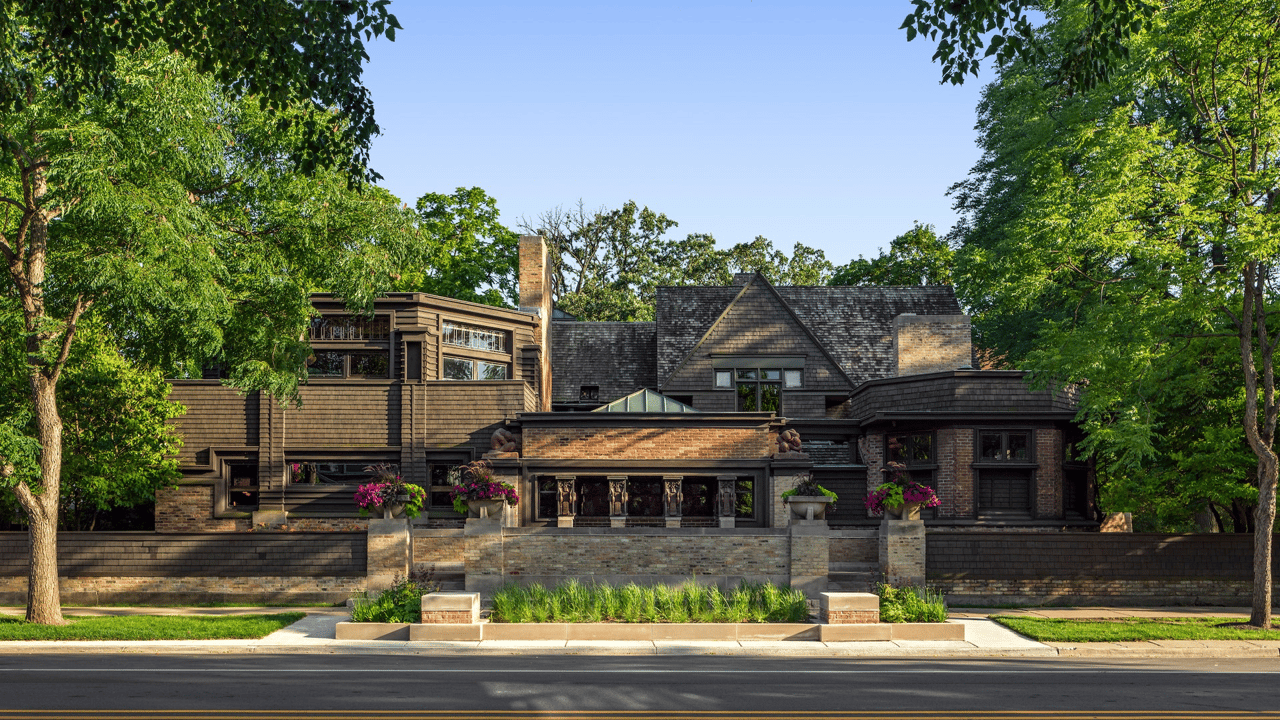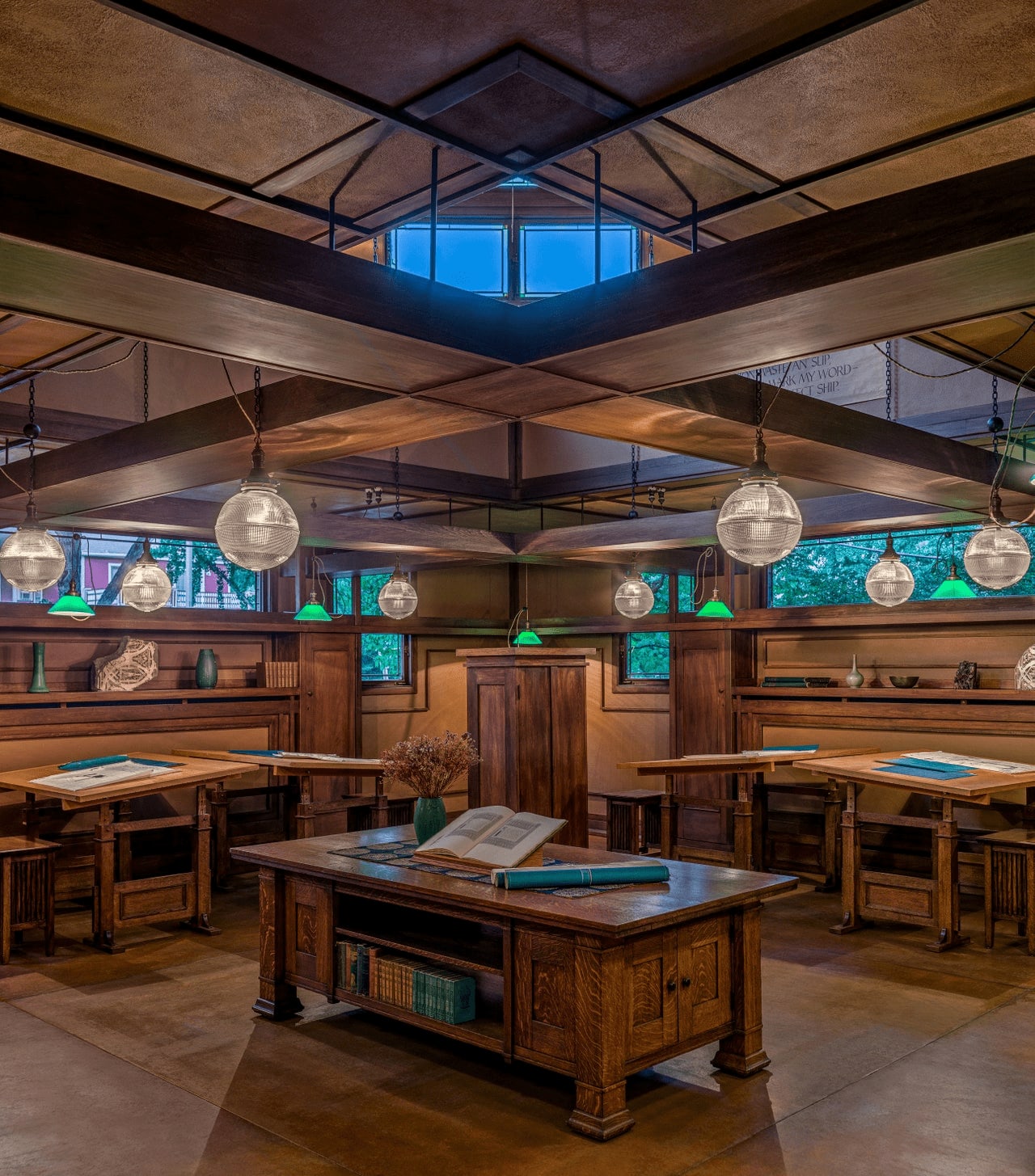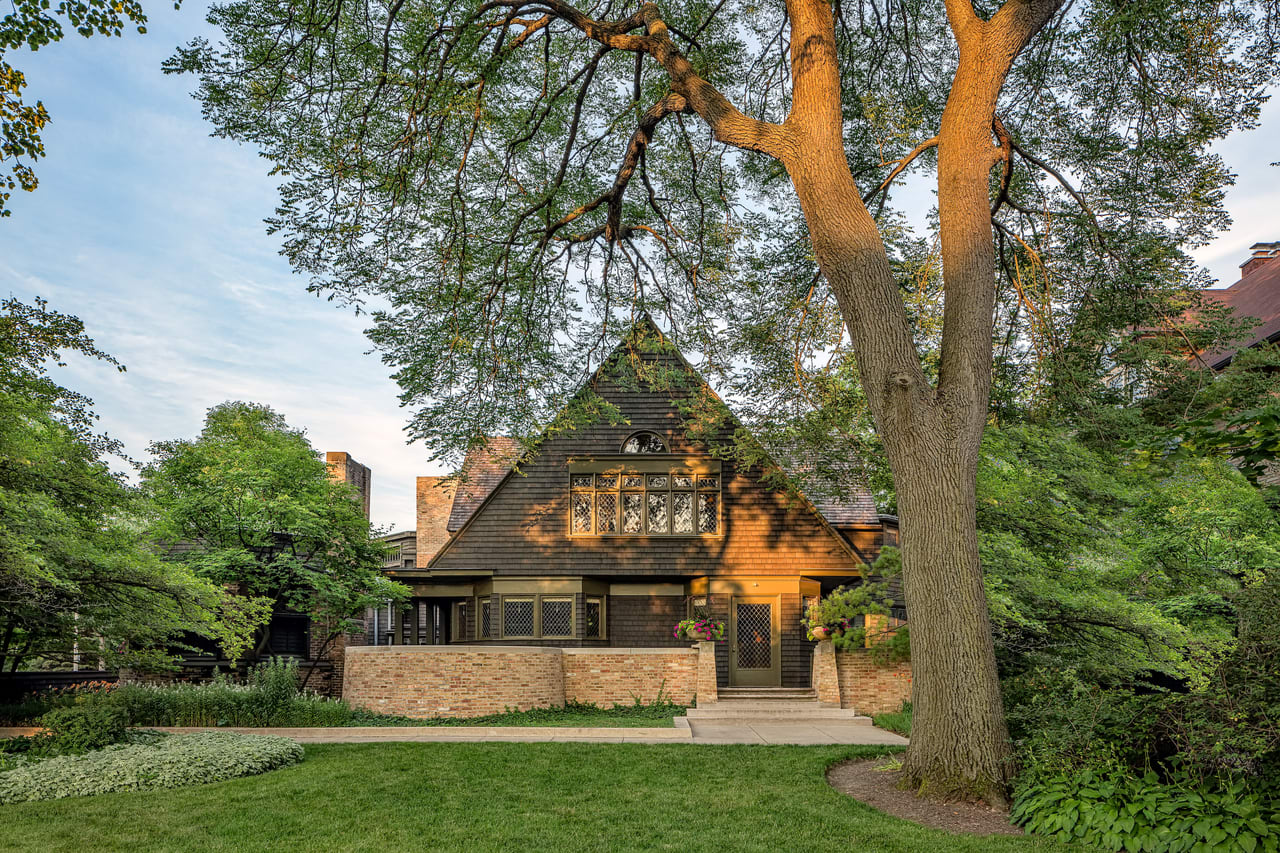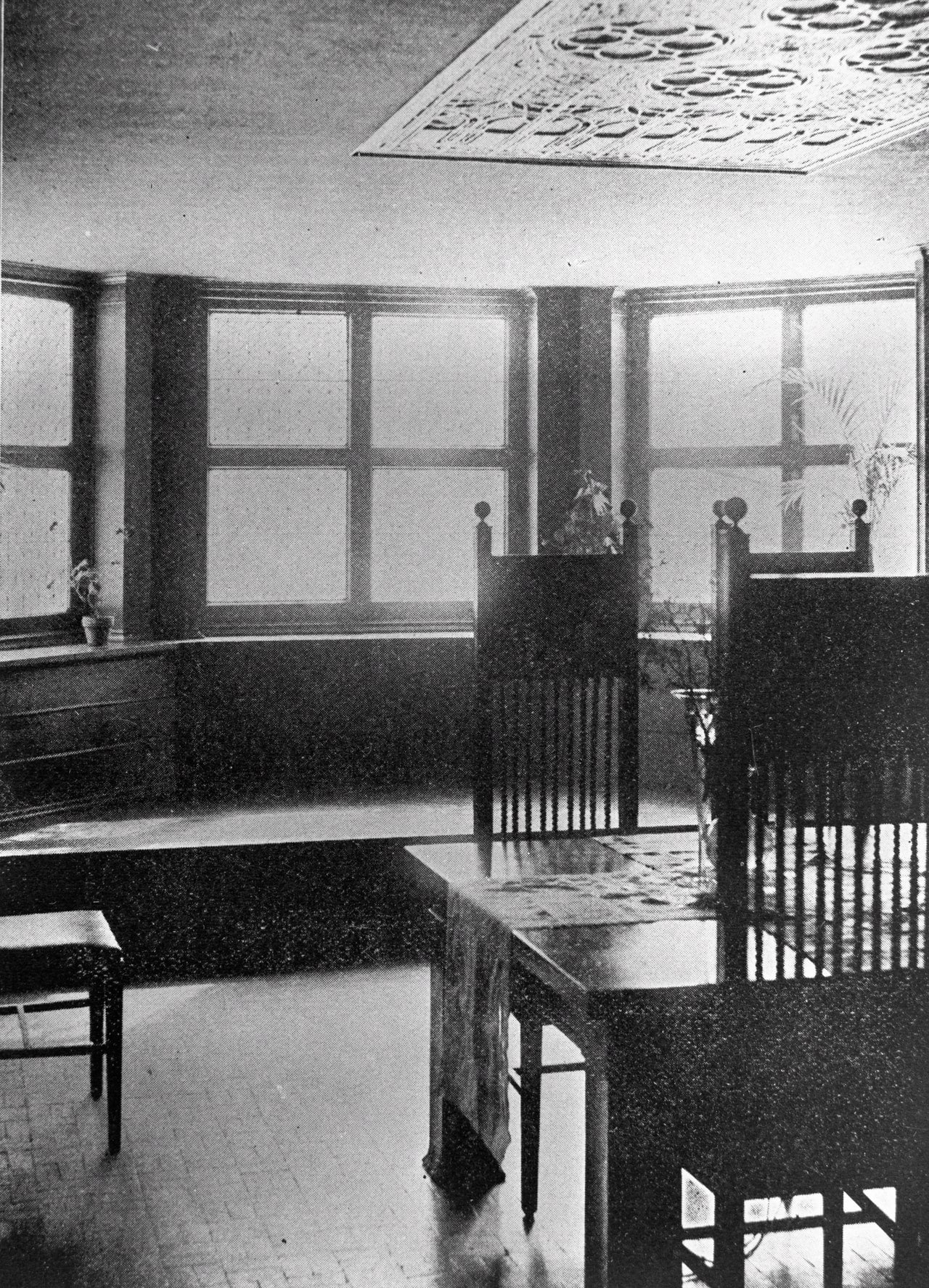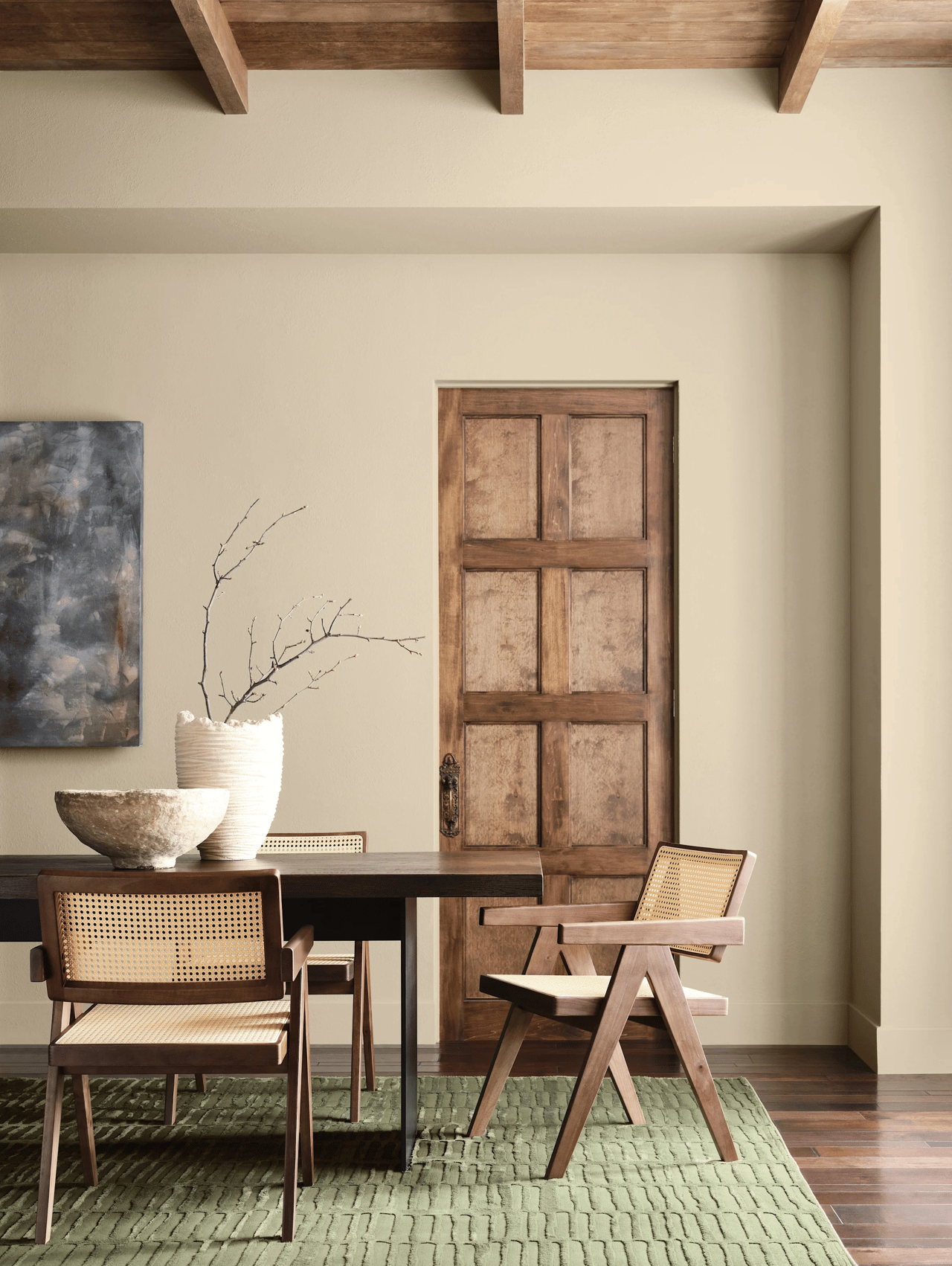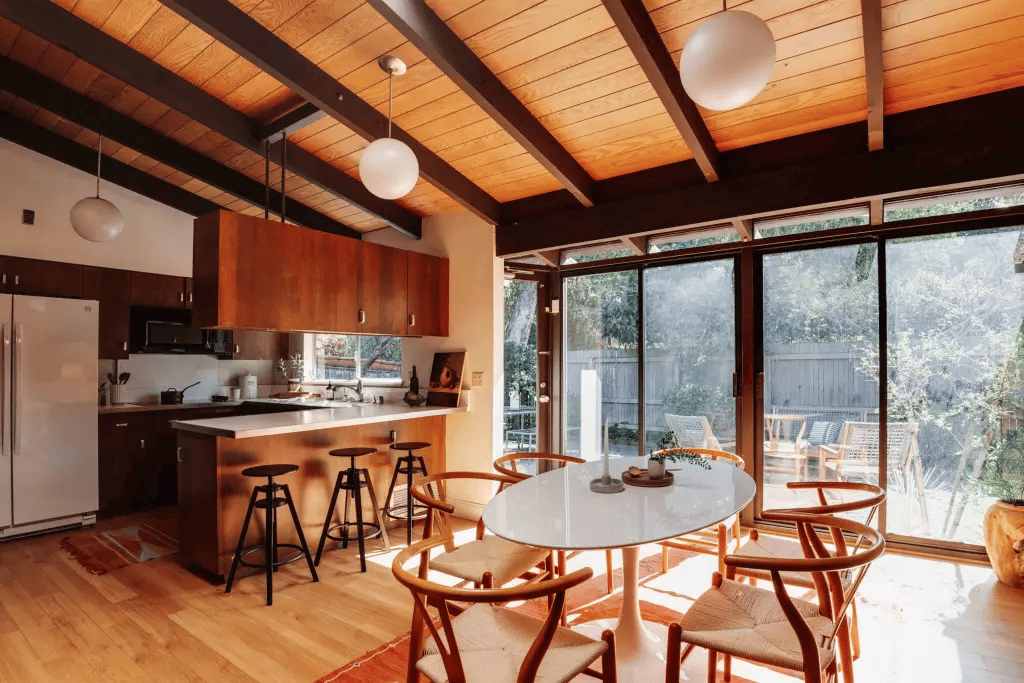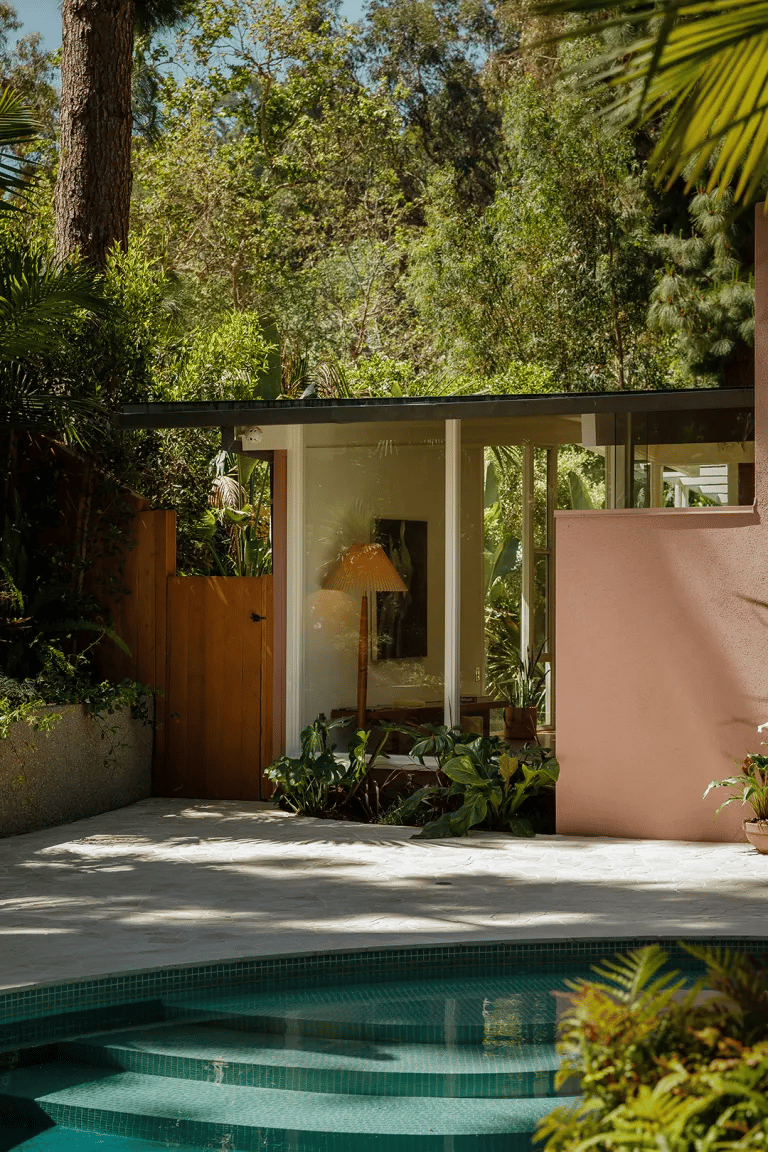For many architecture buffs, the very first stop on a trip to Oak Park, Illinois, is the Frank Lloyd Wright Home and Studio, the architect’s primary residence from 1889 until 1909. Everyday, visitors from across the world travel to the quiet Chicago suburb, which today has the highest concentration of Wright buildings. While in the area, a visit to Wright’s own Oak Park home and studio offers the opportunity to see where many of these structures were designed and how the legendary architect himself lived. Before setting up shop at Taliesin in Wisconsin and later Taliesin West in Arizona, Wright was at work establishing himself and figuring out his distinctive architectural eye in Oak Park. Below, everything you need to know about the Frank Lloyd Wright Home and Studio.
History of Frank Lloyd Wright’s Home and Studio
At age 22 in 1889, Wright was a budding architect and newly married to his first wife, Catherine Lee Tobin Wright. He was working for the architecture firm Adler & Sullivan and still years away from taking on his first independent commission and opening his own practice. With money borrowed from his boss, Louis Sullivan, he built a home for himself and his wife. In its first iteration, the residence was modest in size, with a primary bedroom, nursery, and work space. In 1895, the first major addition was completed, a project that included reconfiguring the downstairs to allow for a larger dining room and a new maid’s room. Upstairs, the playroom was added and the workspace was divided into two bedrooms for their growing family—by the fall of that year, they had welcomed four of their six children.
Wright left Adler & Sullivan in 1893 after a dispute surrounding his independent projects, and he opened his own practice that same year. In 1898, after working in downtown Chicago offices for years, he built a studio wing in his home, which would allow him to be closer to his family and his commissions, many of which were being built in Oak Park. Attached to the home via a passageway, but with a separate entrance on Chicago Avenue, this addition included an office, double-height drafting room with a balcony on the upper level, a reception hall, and a library.
“This is where he really began his architectural career,” Frank Lloyd Wright Trust curator and director of interpretation Sarah Holian says. “You get to see not only how he created a home for his family—he had six children in what is really quite a modest-size home—but also where so many of the early Prairie designs that he’s known for were created in the adjacent studio.”
Wright left Oak Park and separated from Tobin Wright in 1909. Before leaving, he divided the studio and the home, allowing Tobin Wright and the children to live in the studio wing and rent out the house for income. Wright sold the property in 1925 and later owners divided the building into six units and neglected to preserve the historically significant property.
The restoration of Frank Lloyd Wright’s Home and Studio
In 1974, the Frank Lloyd Wright Home and Studio Foundation and the National Trust for Historic Preservation bought the property and set to work restoring the structure. The organizations strived to bring it back to the state it was in 1909 before it had been subdivided. According to the Chicago Tribune, the process took 13 years and $2.5 million, not adjusted for inflation. The project involved removing modern updates, like shag carpeting, and restoring water-damaged walls, among other adjustments. The studio’s foundation was stabilized and a basement was dug out, providing a space to store the Trust’s archive and collections.
“There is no question in my mind that, of all of my grandfather’s buildings that have been restored, the Home and Studio has received the finest restoration,” the late Eric Lloyd Wright, architect and grandson of Frank Lloyd Wright, wrote in the foreword to Building A Legacy: The Restoration of Frank Lloyd Wright’s Home and Studio.
Architectural details of Frank Lloyd Wright’s Home and Studio
The original home—first built in 1889, then expanded in 1895—is defined by its high-pitched roof. This element makes it an outlier among Wright’s most well-known residences, whether Prairie or Usonian, which Wright designed later in his career and generally have a flatter profile. “I think people are surprised when they visit for the first time that his home isn’t a Prairie-style home, which he’s so well known for in the Chicago area and certainly for his early career,” Holian says. “It’s a shingle-style structure, which I think is surprising to many people when they come to visit if they haven’t seen photos.”
Like the residence wing, the studio wing is clad in cedar shingles and brick, creating a sense of visual continuity between the additions and the original house. Located on opposite sides of the studio wing, the library is octagonal in shape and the drafting room’s upper section is octagonal too, giving the structure a unique geometric façade.
One of the most striking architectural elements of the home is the playroom. The space features a barrel-vaulted ceiling topped by skylights filtered with wood grilles and a mural designed by Wright and painted by Charles Corwin. Accessed through a relatively dark hallway, it’s an early example of Wright’s affinity for “compression and release,” in which a relatively cramped and dim area gives way to a spacious, bright room.
As Holian points out, barrel-vaulted ceilings are just one of many details in the house’s design that would go on to appear in Wright’s later commissioned work—in this case, in the Dana-Thomas House in Springfield, Illinois. “It was his living laboratory, [Wright was] trying to see what designs worked in place as he was living through them,” Holian says.
Interior design inside Frank Lloyd Wright’s Home and Studio
Natural materials and earth tones are employed throughout the Frank Lloyd Wright Home and Studio, with green hues in particular used in light fixtures, upholstery, and stained glass. Detailed woodwork is a constant, and it’s particularly crucial in the living areas and studio. Both the playroom and the primary bedroom feature custom murals, and the latter features a frieze on each of the side walls too. “Wright never really said that many other artists inspired him, with the exception of Louis Sullivan,” Holian says. “One of the really wonderful tributes to Sullivan in the home is a stencil on the primary bedroom wall that Wright borrowed from the Auditorium Building that he worked on with Sullivan, so we see that very direct influence there.”
Much of the furniture and artwork that’s in the home nowadays are authentic pieces from when Wright inhabited the space, donated or acquired from the Wright and Tobin family beginning in the ’70s. For example, per Building A Legacy, the original dining chairs were at Taliesin in Wisconsin when the restoration of the Oak Park home and studio began. The committee wrote to Olgivanna Wright, Wright’s widow and then president of the Frank Lloyd Wright Foundation, who agreed to donate six of the chairs to the home. Years later, the remaining two dining chairs were brought to Oak Park too.
Frequently Asked Questions
Frank Lloyd Wright’s Home and Studio is a house museum located in Oak Park, Illinois. Wright himself lived at the property from 1889 to 1909. Many of Wright’s Prairie-style buildings were designed at the studio space on the property, including the Robie House and Unity Temple. The home has been open to the public for tours since 1974 and it was designated as a National Historic Landmark in 1976.
The home was built in 1889 and frequent updates were made by Wright throughout his 20 years living and working at the property.
There are multiple different tours available at the Frank Lloyd Wright Home and Studio. The guided interior tour takes 60 minutes and costs $20 as of this writing. The Inside and Out tour, which combines the guided tour of the interiors with a self-guided audio tour of the Historic District, runs 1 hour and 45 minutes and costs $30. Once a year, the Trust hosts the Wright Plus Housewalk in Oak Park, walking tour ($125 for the public and $90 for trust members). The event offers the opportunity to see inside architecturally significant public buildings and privately owned homes that are otherwise off limits to the public, in addition to the Frank Lloyd Wright Home and Studio. Tours can be booked directly on the Trust’s website.
The Frank Lloyd Wright Trust has been the sole owner of the architect’s Oak Park home and studio since 2012.
Originally published in Architectural Digest
Text by Rachel Davies
